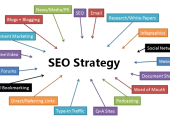Virtual reality classrooms are becoming increasingly popular, and for good reason. These immersive digital environments allow students to fully engage with the material they’re learning, making it easier to understand complex concepts and retain information. A recent study found that students who knew using VR technology had higher test scores and better retention rates than those who learned using traditional methods. As a result, many educators are now incorporating VR technology into their lesson plans to provide their students with a more engaging and practical learning experience.
If you’re a student or an educator, you know that traditional classroom settings can sometimes be limiting. Whether trying to learn about ancient history or complex mathematical concepts, it can be difficult to fully grasp the material when presented in a traditional lecture format. However, with the advent of virtual reality (VR) technology, the educational experience is being revolutionized.
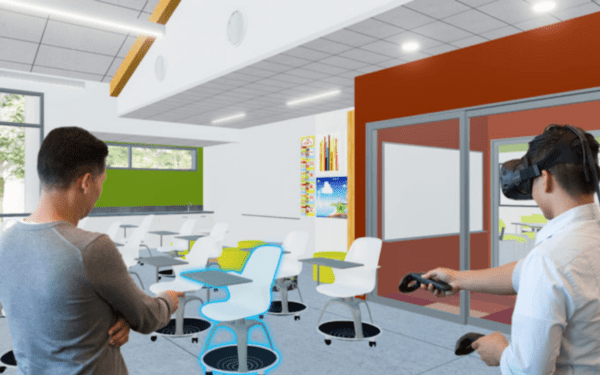
The Role of Virtual Reality in Education
Virtual reality (VR) technology revolutionizes classrooms by providing immersive and interactive learning experiences that enhance traditional teaching methods. In this section, we will explore the role of virtual reality in education and how it can help overcome conventional teaching challenges.
Enhancing Learning Experiences
Virtual reality allows students to engage in experiential and hands-on learning that is impossible in traditional classrooms. It will enable students to explore and interact with real-world environments without leaving the classroom, making it ideal for subjects like history, science, and geography. VR can also enable virtual field trips, simulate laboratory environments, and build meaningful connections among instructors and peers despite the distance between them [1].
Moreover, VR can provide personalized learning experiences that cater to individual learning styles and abilities. It can help students understand complex concepts by visualizing them in 3D and delivering interactive activities promoting active learning [2].
Overcoming Traditional Teaching Challenges
Virtual reality can help overcome traditional teaching challenges such as limited resources, time constraints, and lack of engagement. It can provide students access to resources and experiences unavailable in their local area, making education more inclusive and equitable. VR can also save time and resources by allowing educators to create lesson plans and learning activities that can be reused across multiple classrooms and students [3].
Furthermore, virtual reality can increase student engagement by providing an immersive and interactive learning experience more enjoyable than traditional teaching methods. It can also help students retain information better by providing a memorable and impactful learning experience [4].
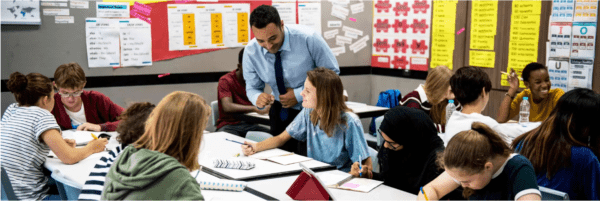
In conclusion, virtual reality has the potential to revolutionize education by providing immersive, interactive, and personalized learning experiences that enhance traditional teaching methods. It can help overcome conventional teaching challenges and increase student engagement, making education more inclusive, equitable, and enjoyable.
[1] Source: Builtin
[2] Source: Wiley Online Books
[3] Source: World Economic Forum
[4] Source: SAGE Journals
Technological Integration and Collaboration
Virtual reality technology has revolutionized the classroom experience by providing immersive and interactive experiences to students. However, it is essential to note that the success of virtual reality integration in the classroom depends on the collaboration between educators and students.
Empowering Educators with VR Tools
Educators must be empowered with the necessary resources and training to integrate VR technology into their curriculum effectively. This includes providing educators with the required hardware and software and training them on using the technology to enhance the learning experience. By providing educators with the necessary resources and training, they can effectively use VR technology to create engaging and interactive lessons that promote student learning.
Fostering Student Collaboration
Virtual reality technology can also be used to foster collaboration among students. Students can develop essential cooperation and problem-solving skills by creating virtual environments that require students to work together to solve problems. Additionally, virtual reality technology can be used to create a more inclusive classroom environment by providing students with disabilities the opportunity to participate in activities that may have been previously inaccessible to them.

Overall, educators can create an immersive and interactive experience that promotes student learning and engagement by effectively integrating virtual reality technology into the classroom and fostering student collaboration. By providing educators with the necessary resources and training, they can effectively use VR technology to create engaging and interactive lessons that encourage student learning.
Curriculum Development and Interactive Content
As virtual reality (VR) continues gaining traction in classrooms, curriculum development has become essential to incorporating VR into lesson plans. By creating interactive content that engages students in simulated environments, teachers can enhance their students’ learning experience.
Incorporating VR into Lesson Plans
When incorporating VR into lesson plans, aligning the content with the curriculum is essential. VR can teach various subjects, from geography and anatomy to abstract concepts. For example, VR can take students on virtual field trips to geographical locations that would otherwise be difficult or impossible to visit. Additionally, VR can simulate the human body and cells, allowing students to explore biology more interactively.
To ensure that VR is used effectively in the classroom, teachers should consider the learning objectives of each lesson and how VR can be used to enhance those objectives. By incorporating VR into lesson plans, teachers can provide students with a more engaging and immersive learning experience.
Virtual Field Trips and Simulations
One of the most exciting aspects of VR is the ability to take students on virtual field trips and simulations. VR can simulate various environments, from the ocean floor to outer space. This allows students to explore and learn about these environments in a way that is impossible in the real world.
For example, VR can take students on a virtual field trip to the Great Barrier Reef to explore the coral reef and learn about its various species. Similarly, VR can simulate surgery, allowing medical students to practice their skills in a safe and controlled environment. In conclusion, incorporating VR into lesson plans can provide students with a more engaging and immersive learning experience. By aligning VR content with the curriculum and considering the learning objectives of each lesson, teachers can create interactive content that enhances their students’ understanding of a wide range of subjects. Whether it is taking students on virtual field trips or simulating complex environments, VR has the potential to revolutionize the way we teach and learn.

Assessment and Personalization in VR
Virtual Reality (VR) has the potential to revolutionize education by providing immersive, interactive, and engaging learning experiences. One of the most significant advantages of VR is its ability to provide real-time feedback and assessment, allowing teachers to track students’ progress and adjust their teaching methods accordingly. This section will explore how VR can personalize learning and adapt to different learning styles.
Real-Time Feedback and Assessment
VR can provide real-time feedback and assessment to teachers, allowing them to monitor students’ progress and provide immediate feedback. This can help students improve their memory retention, problem-solving, and critical thinking abilities. With VR’s interactive features, teachers can obtain real-time feedback on students’ performance and understanding, allowing for immediate adjustments and personalized guidance. According to a systematic literature review of personalization strategies utilized in immersive VR for educational objectives in the classroom, personalized VR learning experiences can lead to better learning outcomes and higher levels of engagement.
Adapting to Different Learning Styles
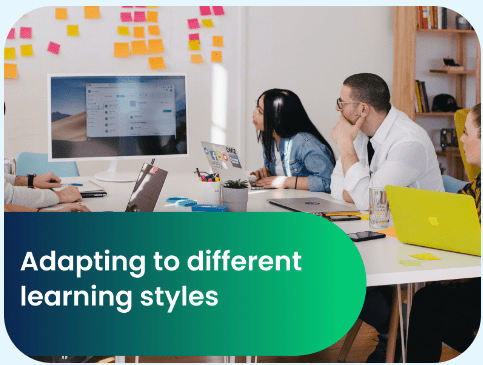
Every student has a unique learning style, and VR can adapt to those styles by providing personalized learning experiences. VR can provide various learning experiences, including visual, auditory, and kinesthetic, to cater to different learning styles. This can help students who struggle with traditional teaching methods to learn more effectively. By adapting to different learning styles, VR can help students improve their memory retention, problem-solving skills, and critical thinking abilities.
In conclusion, VR has the potential to revolutionize education by providing immersive, interactive, and engaging learning experiences. VR can help students improve their memory retention, problem-solving skills, and critical thinking abilities by giving real-time feedback and assessment and adapting to different learning styles.
Future Prospects and Ethical Considerations
Virtual Reality (VR) technology can potentially revolutionize the future of education. The immersive nature of VR allows students to engage with educational content in a way that was impossible before. As research and development in educational VR continue to progress, it is essential to consider the ethical implications of this technology. This section will explore VR’s prospects and ethical considerations in the classroom.
Research and Development in Educational VR
The future of education heavily relies on research and development in VR technology. As VR becomes more accessible and affordable, it will become an increasingly popular tool for immersive learning. To fully realize the potential of VR in education, research and development must continue to progress. This will allow for the creation of more advanced and effective educational VR experiences.
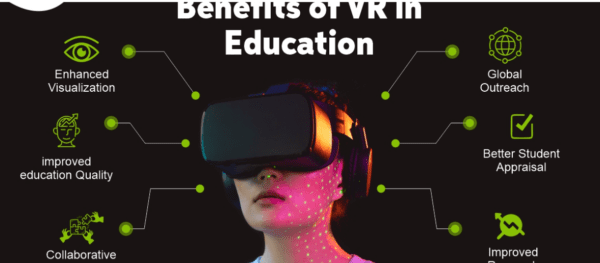
Accessibility and Inclusivity
One of the significant benefits of VR in education is its ability to provide inclusive learning experiences. VR can be used to create learning environments that are accessible to students with disabilities or those who are unable to attend traditional classrooms. However, it is essential to ensure that VR experiences are designed with accessibility in mind. This includes audio and visual cues for students who are deaf or hard of hearing and the ability to navigate VR environments using alternative input devices.
When designing VR experiences for education, it is essential to consider the needs of all students. This includes those with disabilities, as well as those from diverse backgrounds. By creating inclusive VR experiences, we can ensure all students access high-quality educational content.
Ethical Considerations
As with any new technology, there are ethical considerations when using VR in education. One primary concern is data privacy. As VR experiences become more advanced, they may collect sensitive data such as biometric information. It is crucial to ensure that this data is collected and stored securely and that students know what data is being collected and how it will be used.
Another ethical consideration is the potential for VR experiences to be used for unethical purposes. For example, VR could create simulations that promote discriminatory or harmful behaviour. It is vital to ensure that VR experiences are designed with ethical considerations in mind and that they are used responsibly and ethically.
In conclusion, VR has the potential to revolutionize the future of education. However, it is essential to consider this technology’s ethical implications and ensure that VR experiences are designed with accessibility and inclusivity in mind. As research and development in educational VR progress, we can look forward to a future where immersive learning technologies are integral to the classroom experience.





